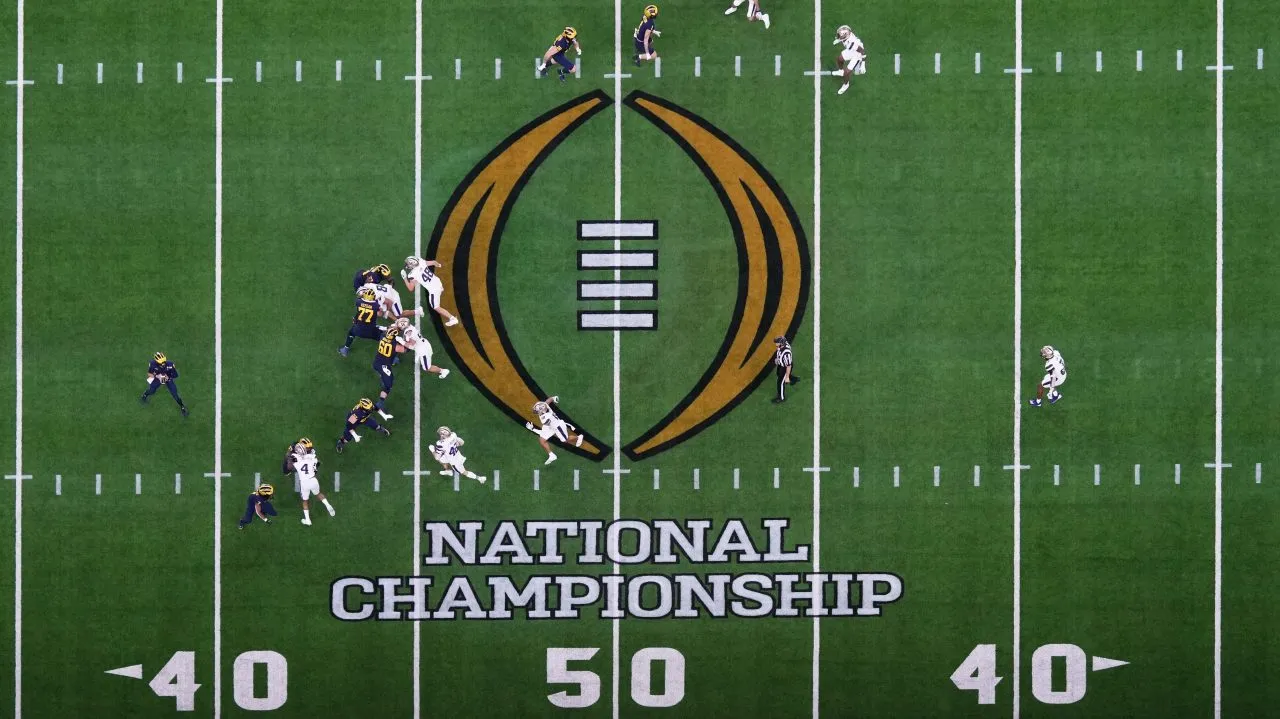The 2025 college football national championship will occur on Jan. 20 in Atlanta. Photo courtesy of sportico.com.
SAWYER GOLDWEIN | ASSISTANT SPORTS EDITOR | sgoldwein@butler.edu
Overtime, or “OT”, is an opinion column series where the Collegian takes national sports headlines or polarizing topics and gives them a Butler-centric angle.
College football will usher in a new era in the 2024-25 season, expanding the College Football Playoff (CFP) to include 12 teams. The four-team format was introduced in 2014 with Ohio State lifting the trophy. It came to a close last season with Michigan winning the national championship over a field of teams that included Washington, Texas and Alabama.
Bob Schultz, internship director and instructor in the College of Communications is one of many college football fans who liked the four-team system.
“I loved the four-team [format],” Schultz said. “It was this final climax of college football and it was truly a [powerful] conclusion.”
Of course, as with most decisions made in the sports world, money and publicity are likely the primary motivators behind the expansion.
The NCAA has been looking for opportunities to put more eyes on their product for years. Recent rumors have circulated about adding rounds to both the CFP and March Madness tournaments, but they took the leap with the CFP first.
“When you start to see an expansion of anything it’s because there’s a popularity and perhaps even a controversy that’s driving that,” Schultz said. “I’m a big fan of competition and an abundance mentality. When you start to see more teams being included, [it brings] more eyes, more tension in college sports.”
While the field of teams will grow, one aspect of the CFP will continue to hold a significant role in how the national champion is decided: the ever-controversial CFP selection committee. Fresh off a year in which the committee excluded undefeated Atlantic Coast Conference champion Florida State from the field, all eyes will be on them.
The 12-team field will still primarily be decided by the selection team, which consists of 13 athletic directors, former players, former coaches and media members. However, the committee does not have complete control.
Five conference champions will receive automatic bids and will then be seeded by the selection group, while the other seven spots will be filled at the discretion of the committee members.
One of the more interesting quirks of the new rules is entangled in the five automatic bids. After the dissipation of the PAC-12 conference, only four power conferences remain in college football. As a result, one automatic playoff bid will go to a so-called “Group of Five” team that wins their conference championship.
This is significant because there is very little history of non-power conference schools making it to the CFP. Only one team has ever done it — Cincinnati in 2021 — and just three years later the Bearcats departed the American Athletic Conference for the Big 12.
Senior actuarial sciences major Micah Bohnenstengel believes that a guaranteed Group of Five bid is for the better.
“If you can prove that you are the best of all the Group of Five teams, then you should get a spot,” Bohnenstengel said. “But I also like that you do have to play on the road in the first round if you’re one of those lower seeds.”
To Bohnenstengel’s point, all first-round games will be played at the home stadium of the higher-seeded team. The top four teams get a first-round bye, so teams seeded from five to eight will be the hosts for round one. Since the Group of Five team will likely be seeded 12th by the committee, they will have to play on the road against the five-seed, in what will surely be a raucous environment.
Sophomore sports media and journalism major Sam Gadomski thinks the home-field advantage adds a compelling element to the new playoff system.
“Being on the road is gonna be a fun challenge,” Gadomski said. “It will make [the playoffs] more exciting and more fun to watch.”
Had the 12-team system been in effect last season, Florida State, Georgia, Ohio State and Oregon would have hosted first-round games. Liberty, the top-ranked Group of Five team, would have traveled to Tallahassee to play in front of nearly 80,000 Florida State fans. The Flames, meanwhile, play in a home stadium with a maximum capacity of 25,000. That type of contrast will be a storyline to watch when the matchups are set in mid-December.
Schultz agreed on the entertainment value added by hosting games at home stadiums instead of neutral sites.
“It just brings back that it really is a bowl game and the hype will be there,” Schultz said. “It’s true, raw football, so it’ll be a fun environment.
One thing is for sure: nobody will complain about having more football to watch. The one-month span from Dec. 20 to Jan. 20 will feature the entire CFP, as well as the end of the NFL regular season and the start of the playoffs.
“I’m excited to see the energy,” Schultz said. “I can’t get enough football.”



